Introduction to ALPR Systems
Ever since optical character recognition (OCR) started including the reading and recognition of vehicle license plates, a wide variety of intelligent transportation systems have seen the light of day. Many processes that once were painstakingly done via manual labor can now fully be automated thanks to automatic license plate recognition (ANPR) technology, which I’m going to continue using throughout this article.
In this article, we take a closer look at some of these application areas and provide examples of ALPR-based solutions offered by Adaptive Recognition.
ALPR vs. ANPR: What’s the Difference?
The terms Automatic License Plate Recognition (ALPR) and Automatic Number Plate Recognition (ANPR) are often used interchangeably, but they have distinct regional and contextual differences. ALPR is the term predominantly used in North America, whereas ANPR is more common in Europe and other parts of the world.
Despite the naming difference, both technologies function in the same way—capturing and processing license plate information for applications like law enforcement, traffic monitoring, toll collection, and parking management.
How do ALPR systems work?
Automatic License Plate Recognition (ALPR) systems rely on a combination of specialized cameras, optical character recognition (OCR) software, and data processing algorithms to capture, interpret, and store license plate information. The process typically involves the following steps:
- Image Capture – High-resolution cameras capture images or video of passing vehicles.
- Preprocessing – The system enhances the image to ensure clarity and accuracy.
- Character Recognition – OCR technology extracts alphanumeric characters from the license plate.
- Data Processing – The extracted data is analyzed and compared with databases for various applications such as law enforcement, tolling, or parking management.
- Storage and Integration – ALPR systems integrate with backend databases, providing real-time alerts and reporting capabilities.
Types of ALPR Cameras
ALPR technology is highly adaptable and is available in different camera configurations to serve various applications. Here are some of the main types of ALPR cameras used today:
1. All-in-One Fixed ALPR Cameras
Fixed ALPR cameras are designed to be permanently installed at key locations such as highways, border crossings, and toll stations. These cameras provide round-the-clock monitoring and can handle high traffic volumes efficiently.
- Vidar: an advanced, all-in-one ALPR camera by Adaptive Recognition. It integrates high-resolution imaging, AI-based OCR, and edge processing to deliver accurate recognition in real-time. Vidar is ideal for highway monitoring, toll enforcement, and security applications.
2. ALPR Cameras for Parking & Vehicle Access Control
These cameras are specifically designed for automated parking systems, gated communities, and vehicle access control solutions. They ensure seamless vehicle entry and exit without requiring human intervention.
- Einar: A compact yet powerful ALPR camera designed for parking and access control. With its built-in OCR engine and real-time processing capabilities, Einar ensures accurate plate recognition, even in challenging lighting conditions. It also comes with a 10-year warranty.
3. Mobile ALPR Cameras for Law Enforcement & Covert Operations
Mobile ALPR cameras are mounted on vehicles, allowing law enforcement agencies and security teams to capture and analyze license plates while on the move. These cameras are crucial for patrolling, covert operations, and vehicle tracking.
- Lynet mobile ALPR camera – A state-of-the-art camera designed for on-the-move usage. Its compact design and powerful recognition capabilities make it an excellent choice for police cars and covert operations.
4. Traffic Enforcement ALPR Cameras
Speed enforcement cameras use ALPR technology to monitor vehicle speeds, capture traffic violations, and improve road safety.
- Vidar Speed: a fixed camera for speed enforcement – A high-performance ALPR camera engineered for traffic enforcement applications. It provides real-time speed measurement and license plate recognition, making it ideal for traffic monitoring and law enforcement agencies.
5. Portable Speed Enforcement Cameras
Unlike fixed speed cameras, portable ALPR-based speed enforcement solutions offer greater flexibility, allowing law enforcement officers to deploy them at different locations as needed.
- S1 portable speed camera, developed by Adaptive Recognition. It combines ALPR and speed measurement technology in a lightweight, mobile unit, making it an effective tool for temporary or remote speed enforcement.
Components of an ALPR System
ALPR Cameras
The core component of any ALPR system is the camera. These cameras capture high-quality images of license plates under various conditions, including low light and high-speed motion. Modern ALPR cameras, such as the Vidar and Einar models from Adaptive Recognition, integrate image processing capabilities directly within the device, reducing the need for external processing.
Optical Character Recognition (OCR) Engine
The OCR engine is responsible for extracting license plate characters from captured images. AI-driven OCR software ensures high accuracy, even in cases of distorted or partially obstructed plates. Solutions like Carmen® FreeFlow leverage advanced AI models to enhance recognition capabilities.
Data Processing and Storage
ALPR systems must process and store large volumes of license plate data efficiently. Edge processing reduces latency by performing data analysis directly on the device, while cloud-based solutions enable scalability and remote access to ALPR data.
Integration with Backend Systems
To maximize usability, ALPR solutions integrate with third-party systems such as law enforcement databases, tolling networks, and parking management software. API-based integration ensures seamless data exchange, enabling real-time decision-making and automated workflows.
Connectivity and Networking
ALPR systems rely on robust networking capabilities for real-time data transmission. Wireless connectivity, including 4G, 5G, and Wi-Fi, ensures reliable communication between ALPR cameras and backend servers, enhancing operational efficiency.
Global Applications of ALPR Systems
Tolling via Pay-by-Plate
Long gone are the days of waiting for your turn in seemingly endless lines at tolling plazas. Nowadays, all it takes is an elaborate network of cameras placed at different sections of the highway—usually near the entry and exit points—to capture vehicles’ license plates and check whether the owner has paid their dues. It’s fast, automatic, reliable, convenient, and cost-effective.
In most of Europe, highway fees are prepaid, indicated by a windscreen sticker. However, highway users don’t need stickers at all in more advanced tolling systems such as at the Crown Prince Mary’s Bridge in Frederikssund, Denmark. They can register on a website, providing their credit/debit card details, and the system only deducts the necessary amount when their vehicles are captured on the highway.
An advantage of the pay-by-plate technology used by such tolling systems is that they can be adapted to other application areas. For instance, who hasn’t dreamed of stopping at a fuel station, refueling, and then leaving while the payment is automatically made? The fast fueling lanes at certain New Zealand fuel stations made that dream a reality.
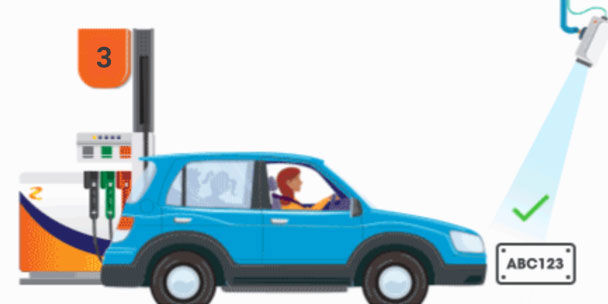
Image courtesy of Z Energy.
Process Automation and Acceleration
Imagine that you don’t have to leave your car for your groceries; they are delivered to your car. You arrive at the ferry port and can board the ship immediately without waiting a single second.
How is it possible? Simple: the combination of ALPR technology and a pre-booking system that records license plate data and, optionally, credit/debit card details for immediate payment. There is no need for extensive staff to monitor and register vehicles one by one; the ALPR-based system does that automatically.
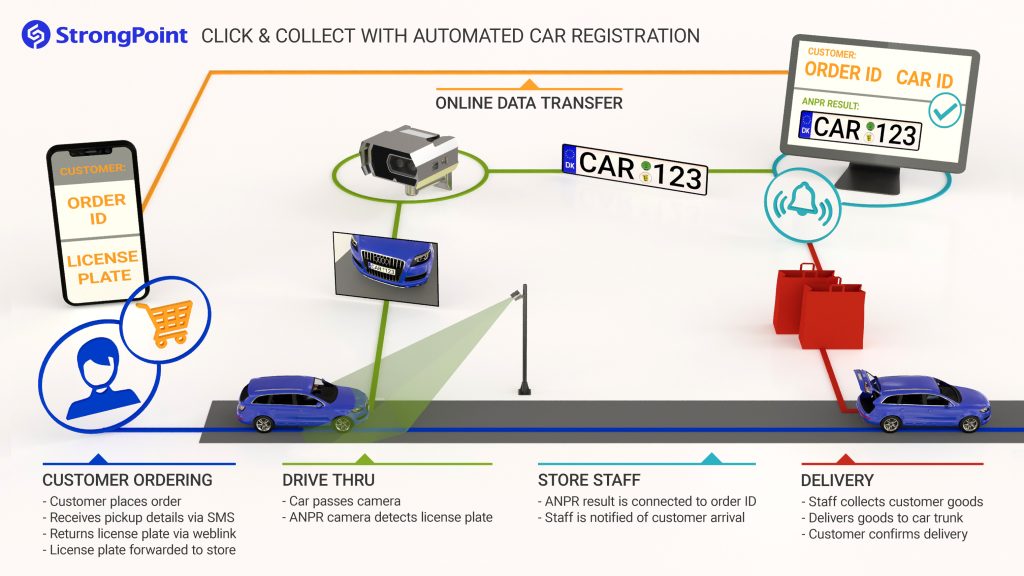
Monitoring and Analysis of Traffic
What’s a common denominator in any major city? Traffic jams. All big cities can put out the “full” sign at this point. This is where intelligent transportation systems using automatic license plate recognition can help: by monitoring traffic, city officials can determine peak hours and divert traffic to lesser-used roads to eliminate or, at least, ease traffic jams.
In addition to making cities more inhabitable, the acquired data can be used for additional purposes, such as creating statistics or even filtering out vehicles of interest, like in the case of our project in Cairo, Egypt, in cooperation with 6SS.
ALPR data can also be used for creating car-free zones for pedestrians to finally enjoy their cities.

Image courtesy of 6SS.
Weighing Systems
Weighting a vehicle, especially a huge truck, is never easy. However, there are multiple options to automatically weigh vehicles, whether they are stopped or on the move. When on-the-move weighing is needed, weigh-in-motion sensors are the key. If the vehicle has to stop—at a gate, for instance—weighbridges are used.
Either way, when ALPR is added to the mix, the complete weighing process can be partially or even fully automated like in the case of this stop-n-go pay-per-weight system at a New Zealand landfill site.
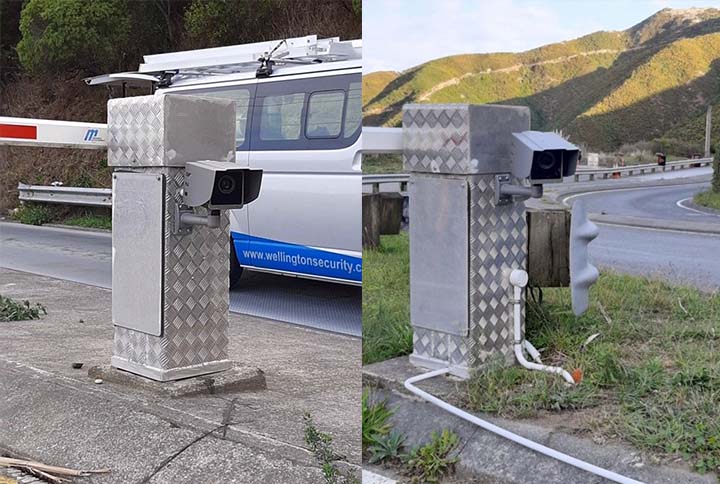
Advanced Parking and Access Control
As ticketless solutions become more common—especially in a post-COVID world—it’s not surprising that the application areas thriving the most from ALPR technology are parking and access control systems. By acquiring license plate data with appropriate tech, entering it into a designated system, and comparing the new data according to the system’s main purpose, complete procedures can be fully automated and made virtually touchless.
No more hiding from unpaid parking fees; all it takes is a surveillance car with a MicroCAM on-the-go ALPR camera or a mobile phone with the Carmen® Mobile Android ANPR app, which can be used inside a car, on a bike/scooter, or foot—circling the parking area to check if fees have been duly paid.
In the case of fixed access control systems, vehicles can be easily filtered out based on various criteria, such as whether they can enter special commercial areas or exhibitions. ALPR-based access control systems can go as far as being combined with under-vehicle scanning units to halt cars with bombs attached from entering governmental premises.
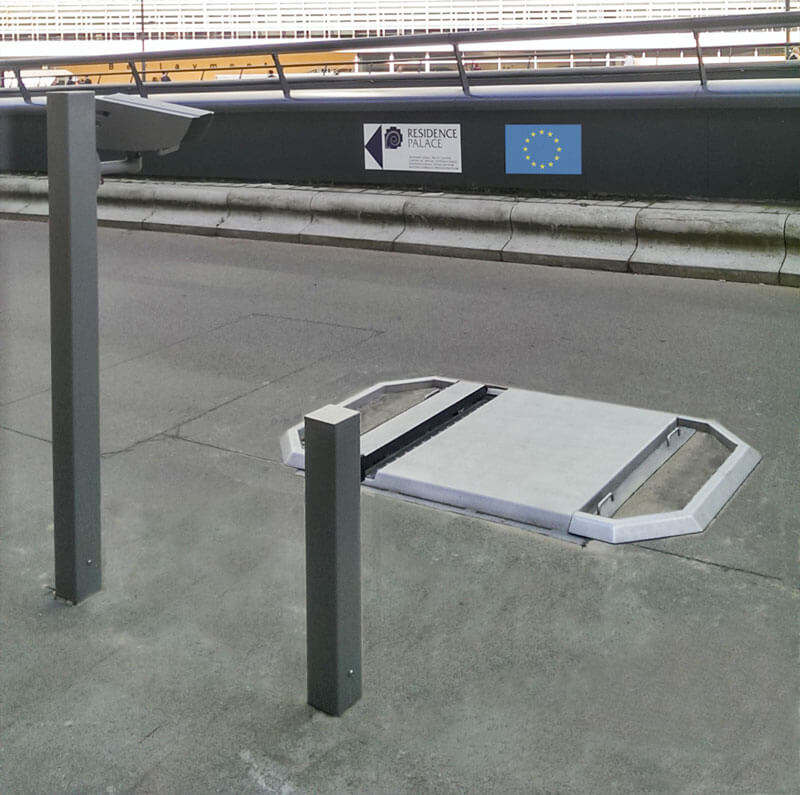
Enhancing Security and Theft Prevention with ALPR
Although ALPR-based traffic monitoring, tolling, and access control systems can be a blessing, some question the overall safety of such systems. After all, how can theft be thwarted if nobody stands guard at parking lots or fuel stations?
Thankfully, ALPR can take care of that as well. All you need is the combination of good license plate recognition technology and a database that sends an alert when something is off, i.e., an unknown driver trying to steal the vehicle from the garage. Our partner in New Zealand, Focus Digital Security Solutions, created an effective system that virtually eliminated the phenomenon known as drive-off fuel theft by creating an alert system based on the database of a well-known retail crime intelligence platform.
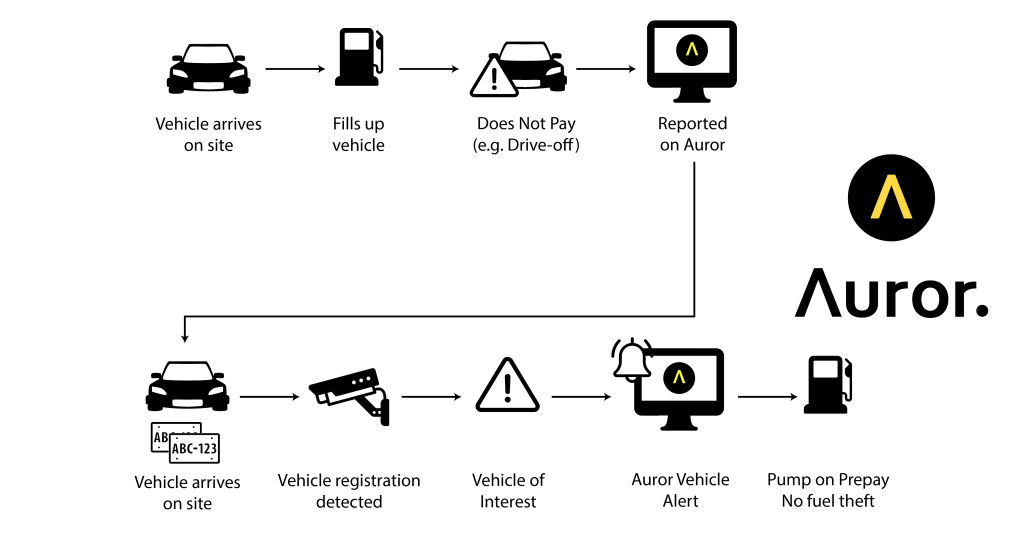
Image courtesy of Auror.
ALPR in Modern Law Enforcement Practices
Road security is a top priority in every country. Accidents caused by those committing a road offense—including but not limited to speeding, bus lane use, forbidden turns, and expired insurance—have to be stopped before they happen. However, police officers are unlikely to jot down an offender’s license plate while chasing them. It’s best to have a solution that is fast enough to capture license plates and, if needed, can be hidden to perform covert operations, such as speed measurement.
The versatility of ALPR technology allows law enforcers to quickly move around the country and perform license plate recognition and speed measurement with highly accurate mobile ALPR units. ALPR can be the base of super-complex systems comprising fixed speed detector cameras and portable speed cameras combined with license plate recognition, such as Adaptive Recognition’s crowning jewel, the VÉDA traffic monitoring and speed enforcement system of Hungary.

Benefits of Implementing ALPR Systems
The adoption of ALPR systems brings numerous operational and strategic advantages across various industries. One of the key benefits is improved efficiency—automating license plate recognition significantly reduces manual labor, streamlines vehicle identification, and enhances workflow automation in applications like parking management and toll collection. Another major advantage is enhanced security, as ALPR systems help law enforcement agencies quickly identify stolen vehicles, track suspects, and enforce traffic regulations.
Furthermore, ALPR technology plays a crucial role in urban mobility and smart city initiatives, supporting traffic optimization and congestion management. Businesses and municipalities can also benefit from data-driven decision-making, as ALPR systems provide valuable insights into vehicle movement patterns, enabling better resource allocation and planning. With advancements in AI and edge computing, modern ALPR solutions offer faster, more accurate processing, making them indispensable for public safety, transportation, and commercial applications.
Versatility in ALPR Systems: A Solution for Every Need
Although the two major added values of a system relying on automatic license plate capturing technology are automation and security, there is one more thing that is expected from an ALPR-based system: versatility. Thankfully, ALPR can easily surpass that expectation by complying with the following criteria:
ALPR as Part of a Bigger Ecosystem
One major rule of any intelligent transport system is that ALPR is only a building block, not a separate solution. This guarantees that the final result will be something that incorporates all the benefits coming from using license plate recognition and perfectly adapts to the end user’s unique needs. Though an ALPR solution can be the core of a whole system, it usually is an equal component in a complex ecosystem.
Flexible ALPR Solutions for Every Use Case
Since automatic license plate recognition is merely a part of the bigger picture, developers and end users have plenty of options to choose from when creating their ALPR-based system. In that regard, ALPR software SDKs, such as Adaptive Recognition’s Carmen® FreeFlow, are the most sought-after because they are akin to assembling furniture from IKEA: you get all the building blocks, and the final result will be license plate recognition. However, the final assembly and the software’s purpose are entirely up to the end user.
Integrators who do not want to spend too much time with the integration process aren’t left in the dark either. Thanks to its versatility, ALPR software is available in various shapes and forms without compromising its overall functionalities. The best examples are turnkey solutions like Carmen® GO, cloud-based SaaS such as Carmen® ANPR Cloud, and, quite recently, mobile applications in the likes of Carmen® Mobile.
Since ALPR software is so versatile, it’s no wonder that it has been incorporated into many different intelligent transportation systems. To demonstrate what automatic number plate recognition can give to the world—and, in the process, give ideas to those thinking about similar projects—we provide some exemplary ALPR-based systems in which our company, Adaptive Recognition, participated via ALPR software or smart ALPR cameras.
Expanding Horizons: Future Possibilities of ALPR Technology
The application areas and projects listed above give only a small taste of what an ALPR-based intelligent traffic monitoring system can do. However, since ALPR is such a versatile tool, it’s safe to say that no ALPR-based system is the same, even if core components have similar features. And that’s the beauty in it: no matter what your system is, ALPR can be shaped so that it seamlessly integrates into it.
For further use cases of our ALPR products, check our case study page.
Are you interested in another application area that we haven’t mentioned in this article?


